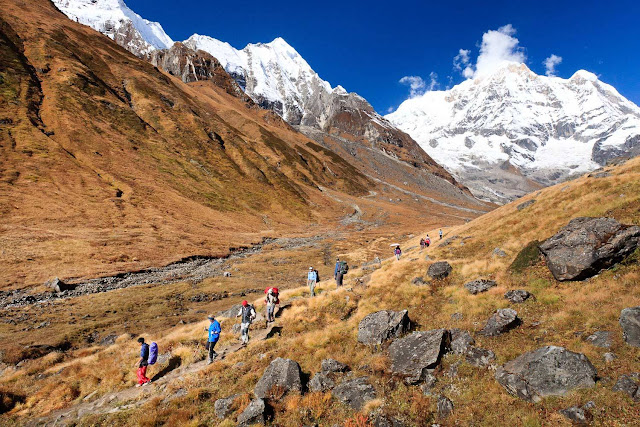The Swayambhunath Stupa
The Swayambhu
means "Self-Created",According to Swayambhu puran, the entire valley
was once filled with an enormous lake, out of grew lotus. The valley came to be
known as Swayambhu. The name comes from an eternal self-existent flame (svyambhu)
over which a stupa was later built. Swayambhunath Stupa (Complex) is located at
the top of hill in the Kathmandu valley, near the new buspark. It is also known
as "The Monkey Temple" as there holy monkeys living inthe north-west parts
of temple. The Swayambhunath complex consists of a stupa, a variety of shrines
and temples, some dating back to the Licchavi period. Buddha's eye and eyebrows
was also paintes on the Swayambhunath Stupa. Between two eyes, the number one
(in Devanagari script) is painted in the fashion of a nose. There are also many
shops, Resturants and Hotels. The Site has two acess points : a long stairway
with 365 steps, leading directly to the main platform of the temple, which is
from the top of the hill to the east; a car road around the hill from the south
leading to th south-west entrance. The first sight on reaching the top of the
stairway is the vajra.
Swayambhunath
is also known as the Monkey Temple due to there are holy monkeys living in the
north-west parts of the temple. They are holy because Manjushri, the
bodhisattva of wisdom and learning was raising the hill which the swayambhunath
Temple stands on. He was supposed to leave his hair short but he made it grow
long and head lice gre. It is said that the head lice transformed into these
monkeys. Manjusri had a vision of the lotus at Swayambhu and traveled there to
worship it. Seeing that the valley can be good settlement and to make the site
more accessible to human pilgrims, he cut a gorge at Chovar. The water drained
out of the lake, leaving the valley in which Kathmandu now lies. The lotus was
transformed into a hill and the flower became the Swayambhunath stupa.
The stupa
consists of a dome at the base, above which is a cubical structure painted with
eyes of Buddha looking in all four directions. There are pentagonal Toran
present above each of the four sides with statues engraved in them. Behind and
above the torana there are thirteen tiers. Above all the tiers there is a small
space above which the Gajur is present. The stupa has many artifacts inside it.


